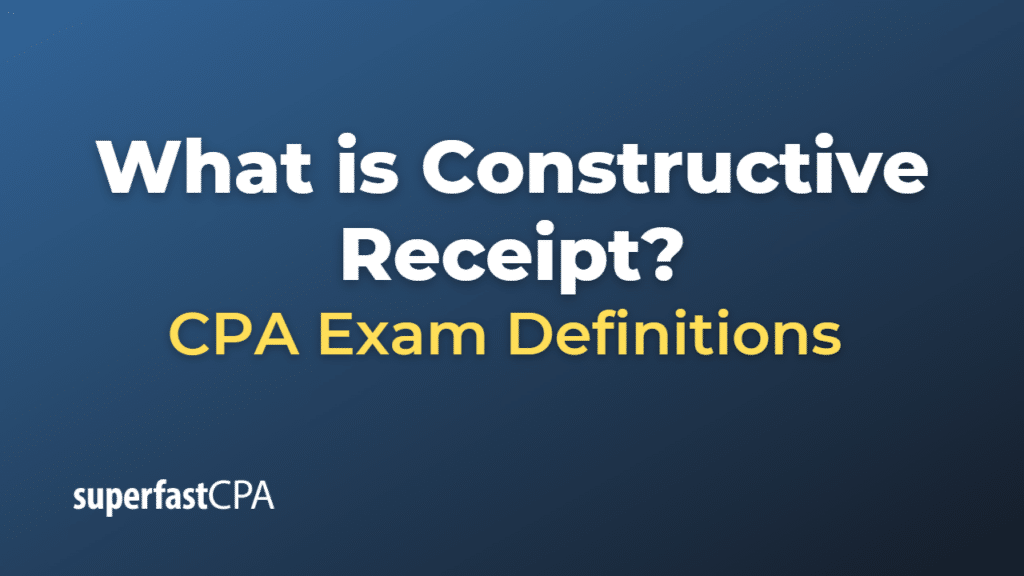Constructive Receipt
Constructive receipt is a tax concept that refers to the point at which a taxpayer is considered to have received income, even if the actual payment has not yet been physically received. According to the Internal Revenue Service (IRS) in the United States, income is constructively received when it is made available to the taxpayer without any restriction on its use, rather than when it is actually in the taxpayer’s possession.
The concept of constructive receipt is based on the cash accounting method, which recognizes income when it is received and expenses when they are paid. In the case of constructive receipt, the taxpayer is considered to have control over the income, even if they have not yet collected it, and is therefore required to report it for tax purposes.
Some examples of situations that may lead to constructive receipt include:
- Interest income: A bank credits interest to a taxpayer’s account on December 31st, but the taxpayer does not withdraw the funds until January. The interest income is considered constructively received on December 31st and should be reported for tax purposes in that year.
- Unclaimed salary: An employee who is entitled to a paycheck on December 31st, but chooses not to collect it until January, is considered to have constructively received the income on December 31st. The employee must report the income for tax purposes in the year it was made available, even though it was not physically received until the following year.
- Deferred compensation: If an employer offers an employee the option to receive a bonus either in the current year or to defer it to the following year, the bonus is considered constructively received in the year it was first made available. The employee must report the income in that year, regardless of whether they choose to defer the payment.
In summary, constructive receipt is a tax concept that determines when a taxpayer is considered to have received income for tax purposes. Income is constructively received when it is made available to the taxpayer without any restriction, even if it has not been physically collected. This concept is essential for accurate income reporting and tax compliance under the cash accounting method.
Example of Constructive Receipt
Let’s consider an example involving a freelance graphic designer, Jane, who operates her business on a cash accounting basis:
- Completed work in December: Jane completes a project for a client on December 20th and sends the client an invoice with payment due within 30 days. The client promptly mails a check to Jane on December 29th.
- Check received in January: Due to mail delays, Jane receives the check on January 3rd of the following year.
In this situation, Jane is not considered to have constructively received the income in December because she had no control over the payment or access to the funds until the check arrived in January. Therefore, Jane should report the income on her tax return for the year in which she physically received the payment, which is in January of the following year.
Now, let’s consider a different scenario:
- Completed work in December: Jane completes another project for a different client on December 20th and sends the client an invoice with payment due within 30 days. The client immediately sends the payment via electronic funds transfer (EFT) on December 28th.
- Funds available in December: Jane receives a notification from her bank on December 28th that the funds have been deposited into her account.
In this case, Jane is considered to have constructively received the income in December because the payment was made available to her without any restrictions. Even if Jane does not withdraw or use the funds until January, she should report the income on her tax return for the year in which it was constructively received, which is December.
These examples demonstrate how constructive receipt plays a role in determining when income should be reported for tax purposes, based on the availability and control of the funds, rather than the actual physical receipt of the payment.













